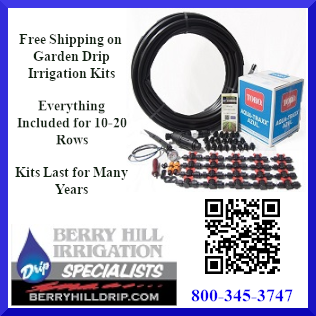
As environmental consciousness continues to grow, many homeowners are seeking ways to make their outdoor spaces more eco-friendly without compromising on aesthetics. One vital aspect of this effort is conserving water in your yard. Not only does this contribute to water resource sustainability, but it can also lead to substantial savings on your utility bills. In this article, shared courtesy of My Garden and Greenhouse, we will explore seven long-term eco-friendly changes you can make to your yard that will help conserve water while keeping your outdoor area beautiful.
FHA’s Energy Efficient Mortgage Program
Before diving into specific yard changes, it’s essential to understand the potential financial benefits of the Federal Housing Administration’s (FHA) Energy Efficient Mortgage program. This program is designed to assist homeowners in financing various eco-friendly home modifications, including those related to water conservation. By utilizing this program, you can access the necessary funds to implement changes without straining your budget.
Switch to Drought-Resistant Plants and Grass
Traditional lawns can be water guzzlers, especially in arid regions. Consider replacing your water-thirsty grass with drought-tolerant plants and ground covers. Not only do these alternatives require significantly less water, but they also bring unique beauty to your yard. Drought-tolerant plants come in various colors, and textures, creating a vibrant and visually appealing landscape that can thrive with minimal irrigation and maintenance.
Professional Repairs for Water Conservation
Water conservation begins with addressing common issues such as hose and spigot leaks. Even a small leak can waste a significant amount of water over time. To efficiently tackle these problems, consider using a home maintenance and repair app that connects you with experts. Prompt repairs not only save water but also prevent potential damage to your property. For more information on how this app works, as well as how it can connect with you to professionals via video for quick DIY assistance, check this out.
Rain Barrel Installation
Installing rain barrels is a simple yet effective way to conserve water in your yard. Rainwater collected in these barrels can be used for various purposes, including watering your plants. By harvesting rainwater, you reduce your reliance on municipal water sources, ultimately conserving this valuable resource. Additionally, rain barrels can be a stylish addition to your yard, complementing its aesthetic appeal.
Mulching for Soil Moisture Retention
Mulching is an eco-friendly landscaping practice that offers multiple benefits. By adding a layer of mulch around plants in your yard, you help retain moisture in the soil. This reduces the frequency of watering required and creates a more stable environment for your plant’s root systems. Mulch also acts as a natural weed suppressor and can visually enhance your garden.
Broom vs. Hose for Cleaning
When it comes to cleaning driveways and sidewalks, using a hose can be incredibly wasteful. The water flows freely, often far more than necessary. Instead, opt for a broom to clean these surfaces. It’s an eco-friendly alternative that not only conserves water but also provides a bit of exercise. Plus, it’s a much cleaner method, avoiding the mess associated with hose cleaning.
Pool Cover for Water Conservation
If you have a swimming pool, investing in a pool cover is a smart choice for water conservation. Pool covers significantly reduce water evaporation, which is a common issue in hot and sunny climates. By keeping your pool covered when not in use, you’ll not only conserve water but also lower your pool maintenance costs and reduce the need for chemical treatments.
Incorporating eco-friendly changes into your yard can have a profound impact on both the environment and your outdoor space. By participating in the FHA’s Energy Efficient Mortgage program, you can secure the financing needed to embark on these water-saving projects. Replacing your lawn with drought-tolerant plants, addressing water leaks, installing rain barrels, etc., are all viable options to reduce water consumption while maintaining the beauty of your outdoor area. These long-term changes not only benefit your wallet but also contribute to a sustainable and visually appealing landscape.
Related Articles & Free Email Newsletter Sign Up
A Beginner’s Guide to Xeriscaping: Creating a Beautiful and Water-Efficient Landscape




Comment here